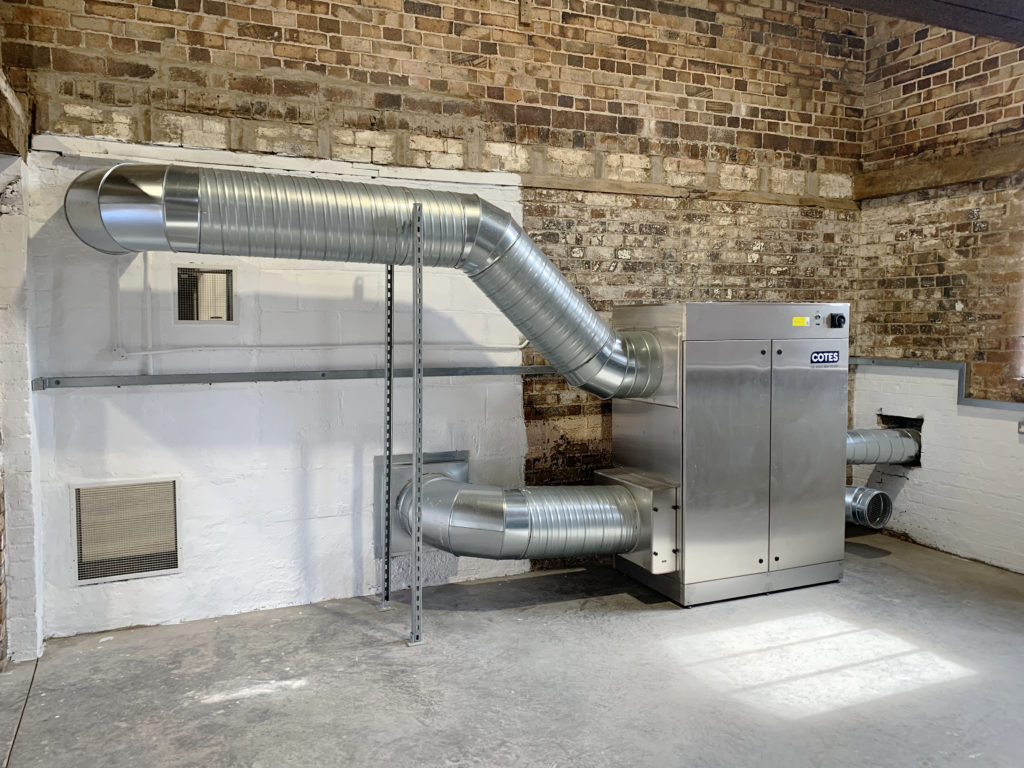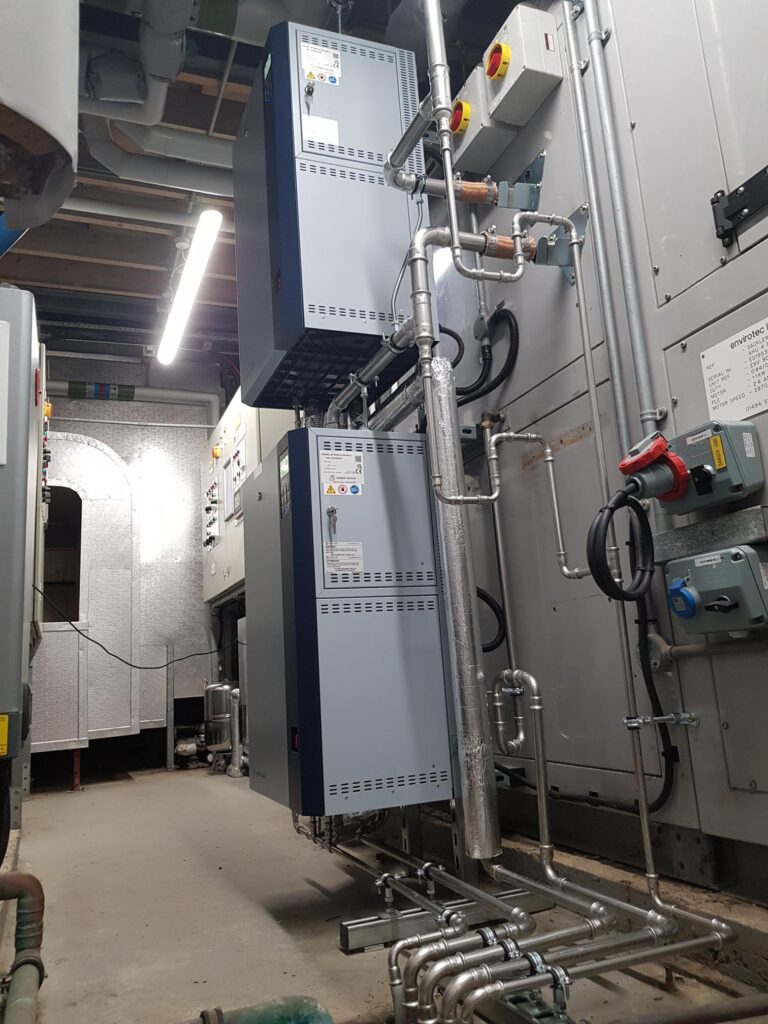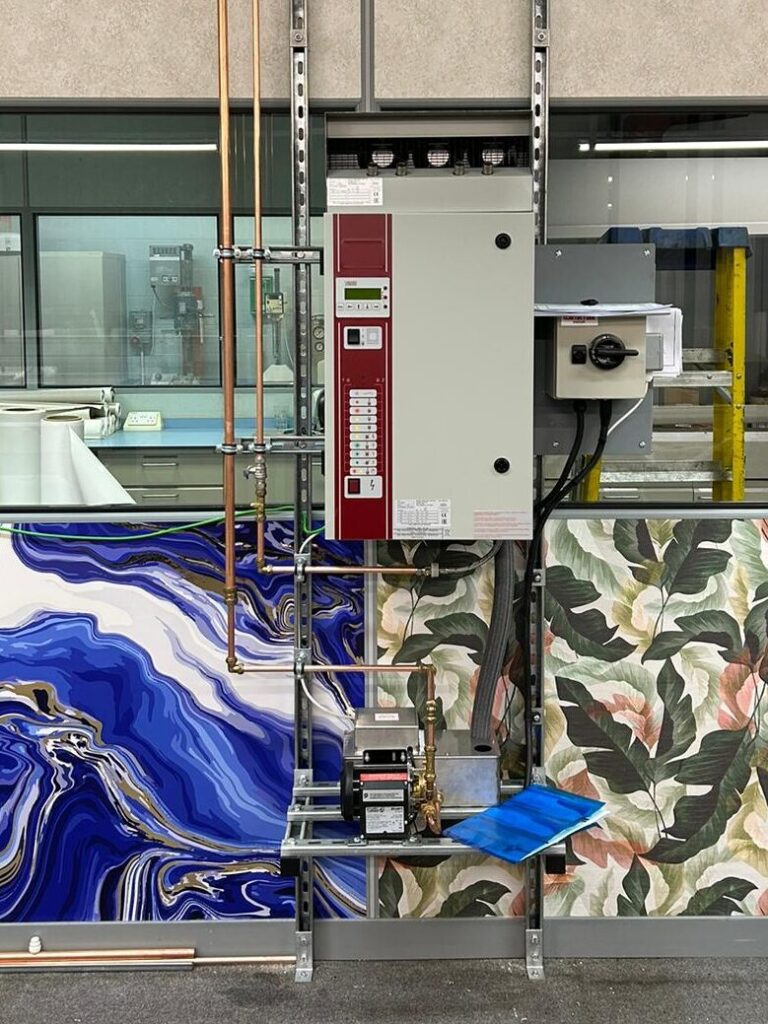Featured in Heating & Ventilating Review
by Managing Director John Barker
“So, what’s your line of work?”
“Humidity Control”
“Sorry? Humanity Control?”
“No, we control the humidity within spaces to normally create a stable condition in which to manufacture, work or store products.”
“Oh, air conditioning!”
A frequent conversation
This is the conversation that we commonly have in the world of Humidity Control. This is because people struggle to understand what we do in this niche corner of the general air conditioning sector.
As we know, humidity and temperature are very closely linked with one affecting the other with potentially undesirable consequences. These include static, condensation, mould, tests going out of spec, production KPI’s missed and human discomfort to name a few.
So, what do we do? To help explain, I have referred to some recent activity from my diary.
Humidity Control & Classic Cars
We recently exhibited at the London Classic Car Show at Olympia, which is always an interesting experience. As we get to speak to a wide variety of potential customers. This ranges from a domestic garage to high end car storage companies. With both applications generally unheated areas, so control is required to ensure no condensation. This will protect cars from corrosion on metal bodies and brake discs but also prevents cracking or mould on hydroscopic materials such as leather and wood veneers. With no temperature control the Cotes Desiccant Dehumidifiers are the way to go as they operate down to low temperatures. Whereas HiDew Refrigerant Dehumidifiers come into their own when some level of heating is provided. These are typical storage applications and do not differ from many of the museum and data storage facilities that we provide equipment to.

Print & Packaging
As a result of another exhibition, this time Packaging Innovations at the NEC. I visited a site where corrugated card is being supplied by the manufacturer at 16% moisture content but after being stored in the uncontrolled manufacturing space for as little as 24 hours the product is reducing down to 6%. This makes the card difficult to slit and cut but also such a dry surface reduces the quality of the print finish and, if coated, creates surface tension and paper curl. This is a major issue for any card or paper-related business owner. Given that this is a 13,000m3 factory space, the solution is a high-pressure water humidifier with the heads suspended from the roof. The Airtec system is ideal as it operates off 230v and has a consumption of less than a kW of energy resulting in low running costs for a relatively large humidity duty.
Laboratories & Clean Rooms

Laboratories are regular customers, either through universities or with pharmaceutical companies. Last week I carried out a site survey at a laboratory which hires out its space to companies who may either have run out of lab rooms, don’t have rooms to the specification required or have an R&D project requirement for a set period of time. The control needs to be consistent and precise so allowing for 24/7 production without fluctuations. Often in this application steam is the only option as the customer requires the sterile nature of steam to comply with regulations. The Neptronic SKE4 resistive humidifier served with reverse osmosis water is the answer. As by removing the minerals in the water with the RO plant the humidifier can have its drain turned off and the water inlet valve can be set to trickle feed so that the humidifier does not go off the boil or lose output during operation. These units are often also connected to our connectivity package allowing for remote monitoring to aid planned maintenance efficiency. In this application the humidifier is positioned in the room and the humidity added via a room distribution unit.
Humidity Control & Wall Paper

My final site visit of last week was one local to our offices in Surrey. The customer is a wallpaper producer. Their digital print room, with all the heat gains produced by the press, was falling to an alarmingly low humidity. This caused the machine to register that it is out of tolerance and as such out of guarantee. The Vapac Electrode Boiler is the answer on this occasion as it is the perfect workhorse for general humidity control – low capital cost and easy to operate, this British manufactured machine (the only steam humidifier manufactured in the UK) provides humidity consistently above 50%RH to reduce static and ensure that the digital press is within its A1 zone to produce the best possible quality product.
Hopefully, this all demonstrates the vast variety and unique requirements of many humidity control applications. Our responsibility is to be able to provide specialist advice and recommend the best equipment for each project.



